Amatitlania altoflava
Amatitlania altoflava is an asset to our hobby in several ways. First, it is one of the few Central Americans that we can rightly call a “dwarf cichlid”. Males do not grow larger than 10 centimeters and the females usually do not even reach 8 centimeters. And this fish is also very attractively colored. Its closely related nephew Cryptoheros nanoluteus is called “The Jewel of Panama” and Amatitlania altoflavus is certainly not inferior to this. In the mating season, Amatitlania altoflava wears a black mask on a golden body that creates a beautiful contrast. Females not only remain smaller but can also be easily recognized by a single or multiple ocellus spot in the dorsal fin.
Etymology
Alto = high, flavus = yellow. Compared to its closest relative Cryptoheros nanoluteus, this fish is built higher and shows more yellow. The genus name “Cryptoheros” is somewhat paradoxical. “Crypto” means “hidden” and “heros” is “hero”. Combined you get “a hero who hides”. Freely translated “A hero in socks” ;).
Synonyms: Cryptoheros altoflavus, Archocentrus altoflavus.
Origin
Panama (endemic).
Distribution
Known only from the Rio Cañaveral basin that flows into the Atlantic Ocean just east of Laguna Chiriqui. Here it inhabits medium to fast-flowing rivers with a stony bottom. This region is difficult to access and only accessible by boat. As a result, wild-caught has only reached European and American aquarists very little. It is suspected that a large part of the European Amatitlania nanolutea actually consists of Amatitlania altoflava (Hanneman 2010), which in turn is rare in America. This would result from the first two catching expeditions, one French and one American, in which the American Team failed to reach the Rio Cañaveral.
Behavior
Relatively peaceful Cichlid that, however, stands her ground in comparison to other species. We call this conspecific aggression.
Diet
In nature, they feed on algae, detritus, small crustaceans and invertebrates. They are also omnivores in the aquarium. Mosquito larvae, daphnia, brine shrimp, live or frozen. Dry food is also accepted, but a variety of food keeps them healthy, and that certainly applies to this kind of omnivore. That is why we must not forget to offer them something vegetable every now and then, in the form of spirulina for example.
Breeding Amatitlania altoflava
As the genus name already suggested, we are dealing with a cave brooder. They lay up to 200 eggs in a cave. This lair is heroically defended. After three days the eggs hatch and after another 7 days the fry swim free. The scene that follows is for many the reason that we keep Cichlids and separating the nest and parents is, therefore, a mortal sin. But not just for the enthusiast. You deprive the fish of an essential part of behavioral development and an important selection moment. Never take the nest away from the parents. Even if the first clutches fail, just let them practice. The species is not on the IUCN list of endangered animals but is included in the C.A.R.E.S. Program. This is an awareness and conservation initiative of the American Cichlid Association ACA.
The Aquarium
Because we are dealing with a small, relatively quiet species here, an aquarium of 100 centimeters in length is sufficient for one couple. However, due to their conspecific temperament, an aquarium of at least 140 centimeters is required for 2 couples. Water quality takes precedence over water parameters that are around neutral in nature. This means frequent and regular water changes and powerful filtration. Temperature 24-26 Celsius. Planting is possible although the only plants they encounter in nature are the grasses that hang from the bank in the water. (Dan Woodland 2008). If we want to fully appreciate the beauty of this fish we should not keep them together with the larger Central Americans. It is better to accompany them with a group of livebearers or characins.
Reference
Allgayer R. 2001. “Description d’un genre nouveau, Cryptoheros, d’Amérique centrale et d’une espèce nouvelle du Panama (Pisces: Cichlidae).”. L’an Cichlidé. v. 1 / 2001 pp 13-20
In 2001, Robert Allgayer introduced the genus Cryptoheros in this article. At the same time, he described a Cichlid from the difficult accessible Rio Cañaveral in Bocas del Toro Province, Panama, as Cryptoheros altoflavus. This species, until then known as C. sp.”Cana”, was brought to France by Patrick de Rham and Jean-Claude Nourisat in 1995, but showed great similarities with the C. nanoluteus described in the same year, which occurs in the rivers which flow into Laguna Chiriqui, just west of the range of C. altoflavus.
The only difference seems to be a slightly taller physique and a total or partial lack of dark markings on the body. However, these kinds of differences can also be found between the different populations of C. nigrofasciatus (Michi Tobler 2005). We may therefore be dealing here with a geographic variety of C. nanoluteus. For now, however, this description is valid. Additional taxonomic research in the future will have to show whether the fish retains this status or perhaps shifts to a variant or subspecies level.
Video
Author
Rene Beerlink
Bron: NVC
Literatuur: Datz: Aquarien Terrarien,Volume 56, Pagina 256
Copyright images
Matthijs Meindertsma

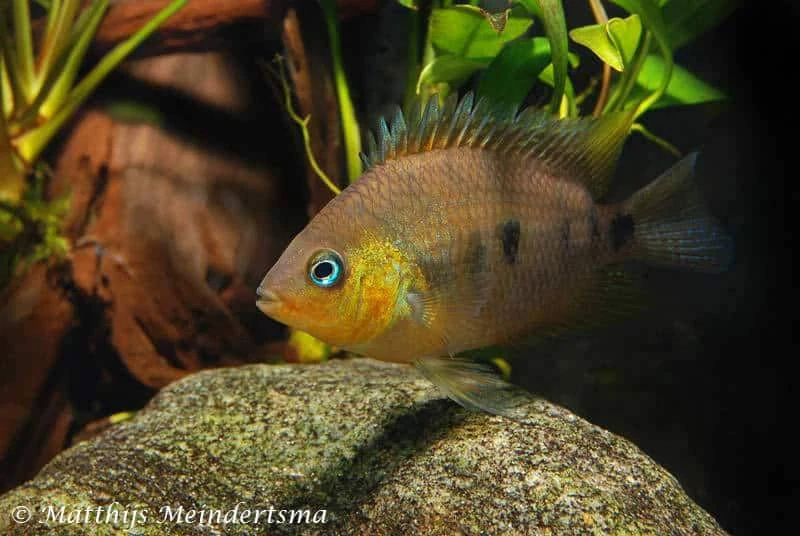


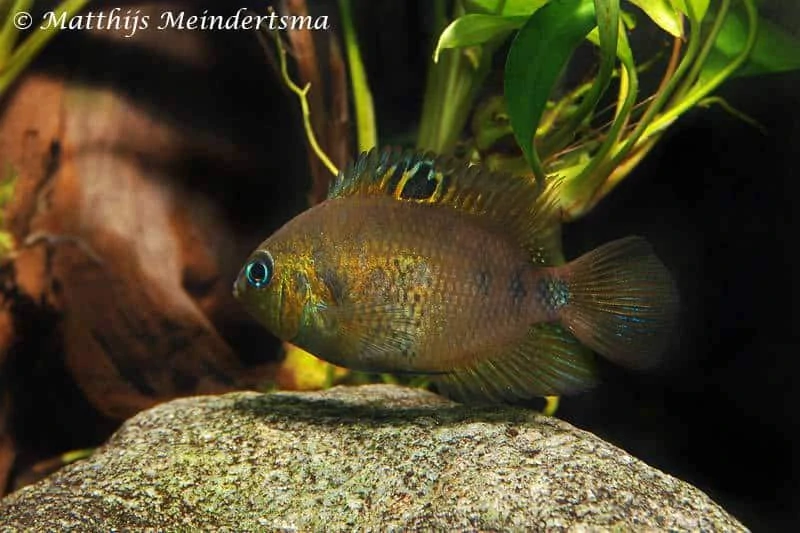

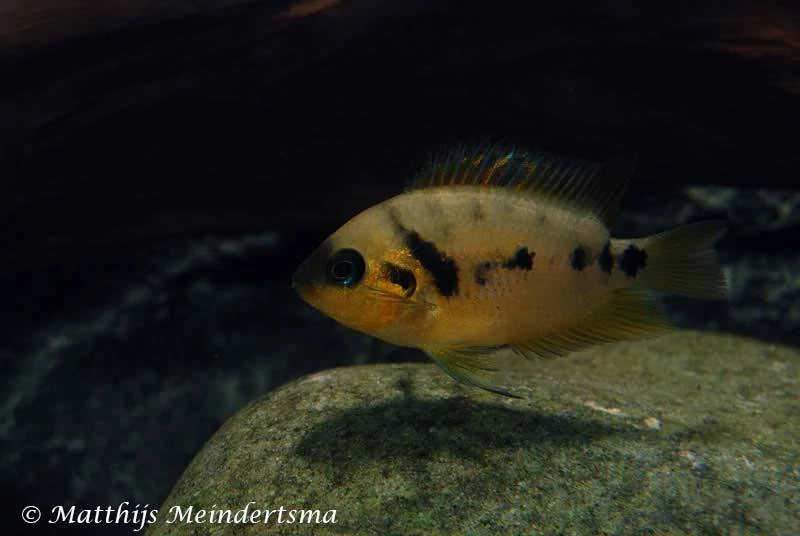






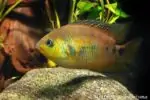





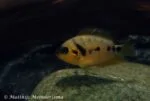
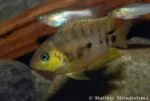





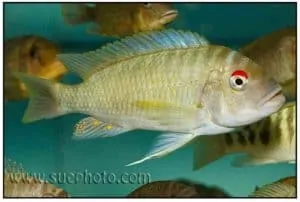
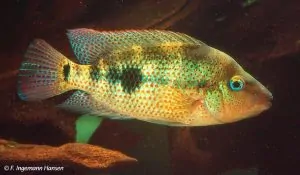


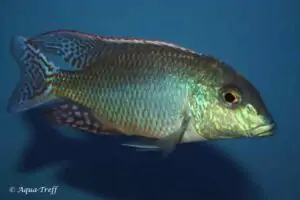
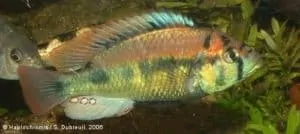

Reviews
There are no reviews yet.